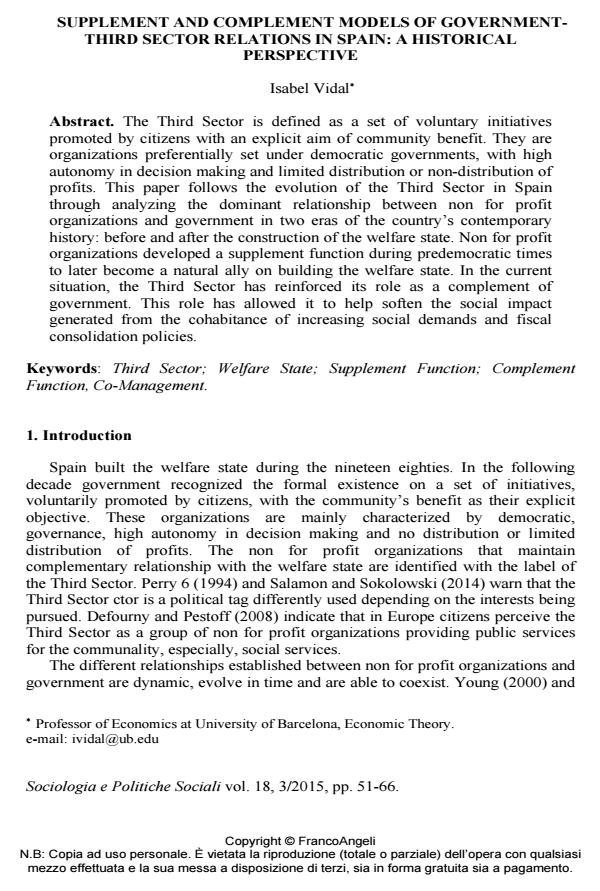Supplement and complement models of governmentthird sector relations in spain: a historical perspective
Titolo Rivista SOCIOLOGIA E POLITICHE SOCIALI
Autori/Curatori Isabel Vidal
Anno di pubblicazione 2016 Fascicolo 2015/3
Lingua Italiano Numero pagine 16 P. 51-66 Dimensione file 84 KB
DOI 10.3280/SP2015-003004
Il DOI è il codice a barre della proprietà intellettuale: per saperne di più
clicca qui
Qui sotto puoi vedere in anteprima la prima pagina di questo articolo.
Se questo articolo ti interessa, lo puoi acquistare (e scaricare in formato pdf) seguendo le facili indicazioni per acquistare il download credit. Acquista Download Credits per scaricare questo Articolo in formato PDF

FrancoAngeli è membro della Publishers International Linking Association, Inc (PILA)associazione indipendente e non profit per facilitare (attraverso i servizi tecnologici implementati da CrossRef.org) l’accesso degli studiosi ai contenuti digitali nelle pubblicazioni professionali e scientifiche
The Third Sector is defined as a set of voluntary initiatives promoted by citizens with an explicit aim of community benefit. They are organizations preferentially set under democratic governments, with high autonomy in decision making and limited distribution or non-distribution of profits. This paper follows the evolution of the Third Sector in Spain through analyzing the dominant relationship between non for profit organizations and government in two eras of the country’s contemporary history: before and after the construction of the welfare state. Non for profit organizations developed a supplement function during predemocratic times to later become a natural ally on building the welfare state. In the current situation, the Third Sector has reinforced its role as a complement of government. This role has allowed it to help soften the social impact generated from the cohabitance of increasing social demands and fiscal consolidation policies.
Parole chiave:Third Sector; Welfare State; Supplement Function; Complement Function, Co-Management.
Isabel Vidal, Supplement and complement models of governmentthird sector relations in spain: a historical perspective in "SOCIOLOGIA E POLITICHE SOCIALI" 3/2015, pp 51-66, DOI: 10.3280/SP2015-003004